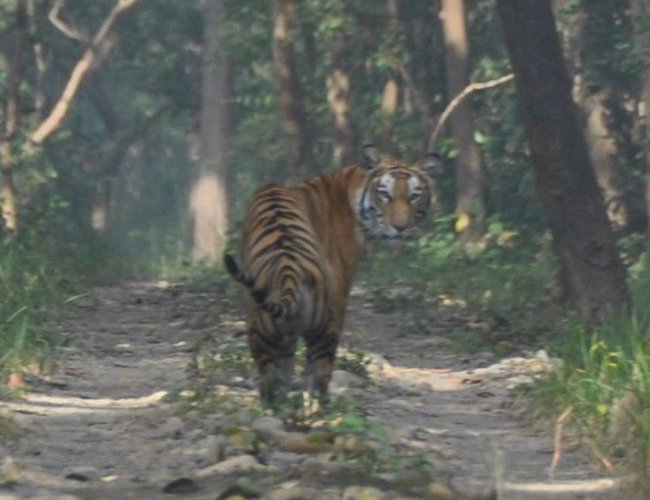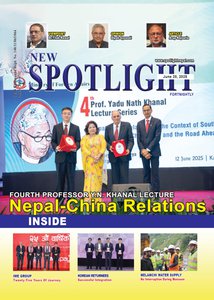
Nepal stands as one of the last sanctuaries for the majestic Bengal tigers. Of late, the Himalayan nation has stood out in the international community in conservation, managing to triple its tiger population in just twelve years. While the conservation world has applauded Nepal’s effort in this regard, human-tiger conflict stands as one of the major challenges to be reckoned with by the government. As per the Government of Nepal statistics, more than sixty people have died from tiger attacks between 2019 and 2025. The victims are primarily people who rely on forest resources for sustenance whether it be grazing cattle, collecting fodder for fuel, or foraging for food. Despite the number of attacks, the issue of human-tiger conflict is not a priority for the government as evidenced by few, if any, effective measures to mitigate the problem and manage the tiger population.
A Scientific Approach to Tiger Management
North America has a rich history of wildlife conservation and successfully brought back species from the brink of extinction, including bison, wild turkey and whitetail deer. Restoration efforts have not only helped increased the numbers of wildlife to a stable level but have ensured that they are in surplus numbers. The carrying capacity of any habitat should be the scientific basis for determining the number of wildlife that any given environment can sustain. Whether it is a prey species or a predator, it is not sustainable to push the land into extreme pressure as it is not good for either the wildlife or its habitat. Understanding this has been critical to the success of wildlife restoration in North America.
Viewing wildlife as a public resource to be held in public interest by the state lies at the center of the North American model of wildlife management. The state is entrusted with the role of restoring and protecting wildlife to a sustainable level on behalf of the people through regulations, enhancement of habitats and best management practices. However, the state is equally responsible for ensuring that its citizens, including those marginalized and at the fringes of the society are protected and their right to life is guaranteed. While the number of tigers keeps ticking at an impressive rate, poor Nepali villagers are at the frontlines of human-wildlife conflict. The ultimate question to be asked is what do we do with surplus tigers when we do not have adequate carrying capacity?
Challenges and Opportunities
While the balance of reviving the tiger population to sustainable levels and preventing human-tiger conflict is a major challenge, it nonetheless brings with it immense opportunities for the state. Using exotic animals in diplomacy is not a new thing and “Panda Diplomacy” is perhaps the most iconic of all. Nepal has a unique opportunity to use a surplus in the tiger population to enhance diplomacy around the world. The state needs to first determine the carrying capacity of the land and sustainable numbers of tigers that it can hold, and then gift its surplus tigers to strengthen global diplomatic ties. If the state is able to manage a sustainable and healthy tiger population while fostering diplomacy in the international arena, Nepal will undoubtedly find itself in a win-win situation.
Second, the government needs to invest in the field of tiger research. In doing so, it can use surplus/ conflict prone tigers to be studied in large enclosed habitats free from human settlements and intrusions, thereby minimizing conflict. Special thought is required to house known man-eating tigers to ensure that they do not escape and threaten human lives. However, the current situation is dire as the State does not have adequate funds to manage its rising tiger population. In reality, the State has been reeling to even provide cages required to temporarily house tigers with a known history of conflict. In my recent visit to Chitwan NationalPark, I found out first hand that providing meals for captive tigers has been a challenge. It is clear that the State needs to secure more funding for managing Nepal’s tiger population. Given the popularity of tigers for tourists, and the subsequent revenue generated by tourism for the State, more needs to be invested in the field of research and managing a sustainable tiger population.
Third, the drastic increase in tiger population in the backdrop of a rapidly ‘developing’ nation poses a deeper question: What kind of ‘development’ will Nepal choose to pursue? Despite the challenges of having to balance rapid urbanization, modernization and developmental growth against conservation of its natural resources including tiger habitat, Nepal has an opportunity to choose its model for development. In a rapidly changing world, Nepal must never lose sight of its unique qualities; tigers roaming its forests and grasslands is key among them.
Balancing development and wildlife conservation is an opportunity for Nepal to promote a sustainable and locally designed model for the future. Nepal’s success in restoring its tiger population is commendable, but with that success comes an emerging challenge and unique opportunities in the days ahead.
Dhakal is an educator













